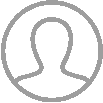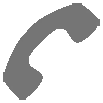Air travel innovation has opened up our doors to unfamiliar locations-moreover, unfamiliar time zones. To those of you who have ever traveled internationally, you must be familiar with the term: Jet Lag. It presents itself when you’re visiting a location with a different sleep-wake cycle than your own and are exposed to more natural and artificial light, resulting in difficulty falling asleep during your preferred bedtime.
What causes Jet Lag?
This phenomenon is caused by our internal timekeeper, or circadian clock, which guides us 24/7. In a single day, our circadian clocks are constantly assessing external cues, such as sunlight and temperature, thus driving our circadian rhythms.
These rhythms typically function right under our noses, but you may have felt their presence in the past when you’ve naturally woken up early on a weekend morning. That is our internal rhythm actively guiding us, telling us when to eat, and ultimately when to sleep. It goes without saying, being in a different time zone can cause physiological disruption, especially if your body thinks it’s midnight and you still see the sun shining bright in the sky.
Artificial Light & Delayed Circadian Rhythms
Our minds unfortunately don’t know the difference between sunlight and artificial light. Similar to advancements in transportation, other technological innovations have also affected our natural sleep cycles. Ever since the invention of the light bulb, we have been setting our own schedules for how long we can work into the night.
Our circadian rhythms were critical at a time when people woke up and slept with the rising and falling of the sun. However, this practice doesn’t apply to many of us anymore and we are beginning to see the effects. Research has shown, by spending less time outside and more time under artificial lighting, we are inadvertently delaying our circadian rhythms.[1] This means we are getting further away from our natural sleep-wake cycles and approaching a later one to which our bodies are not accustomed.
Some studies have linked artificial light exposure at night to several types of cancer (including breast and prostate cancer), diabetes, heart disease, and obesity.[2] While reasons are still unclear, it’s possible artificial light sends involuntary messages to our bodies’ internal processes; telling them to work when they really should be resting.
Additionally, we require near-total darkness for our bodies to release melatonin, the hormone involved in regulating day-night cycles.[3] When it’s late at night and you’re sitting in a well-lit room or staring into an electronic screen, remember this hormone won’t recognize it has a job to do soon. However, don’t feel discouraged, there’s a remarkably simple way to communicate with melatonin.
Shedding Light for Better Sleep
It’s difficult to imagine a city without streetlights, or even a car without headlights. As a society, we’ve overcome the night by fully adopting tools that help us function in what would otherwise be heavy darkness. However, it’s important to consider the involuntary processes constantly happening in our bodies. We can’t personally tell our bodies when to do everything, so cues like light (natural and artificial) automatically signal to our brains, “It’s time to get moving!” We aren’t able to control the timing of our physiological processes, but influencing our surrounding environment can help us fall asleep faster.
Tips for Reducing Light at Bedtime
• Keep electronic screen usage to a minimum before you are about to hit the hay. If you’re feeling bored around bedtime, put on our SleepPhones (or wireless version) and listen to your favorite songs!
• Turn off most of the lights inside of your home before your usual bedtime to signal an earlier release of melatonin. Purchase a Sleep Shield to obstruct ambient light glowing from electronic devices.
• When flying internationally, set aside a specific time-frame to sleep on the plane to begin adjusting to your destination’s sleep-wake cycle. Click here to take a look at our battery packs, they’re perfect for CPAP users who travel frequently.
1. “Entrainment of the Human Circadian Clock to the Natural Light-Dark Cycle” – Current Biology, August 2013 (source)
2. “Light from laptops, TVs, electronics, and energy-efficient lightbulbs may harm health” – Harvard Health Letter, May 2012 (source)
3. “Melatonin for the prevention and treatment of jet lag” Cochrane Library, February 2008 (source)







2 Responses
I have a new DreammStation Pro CPAP machine and wonder why an A/HI reading which has been between 2 and 5 units [for over 3 months] would suddenly jump to 12.8 units? The mask fit is always between 96% to 100%. Any info would be greatly appreciated.
Thank You.
Hi Sarah, I am sorry to hear about this concern! Did you purchase the machine through CPAP.com? We would like to offer our assistance by phone so we may help troubleshoot the issue in a more timely manner. You can reach us at 1-800-356-5221.Thank you!